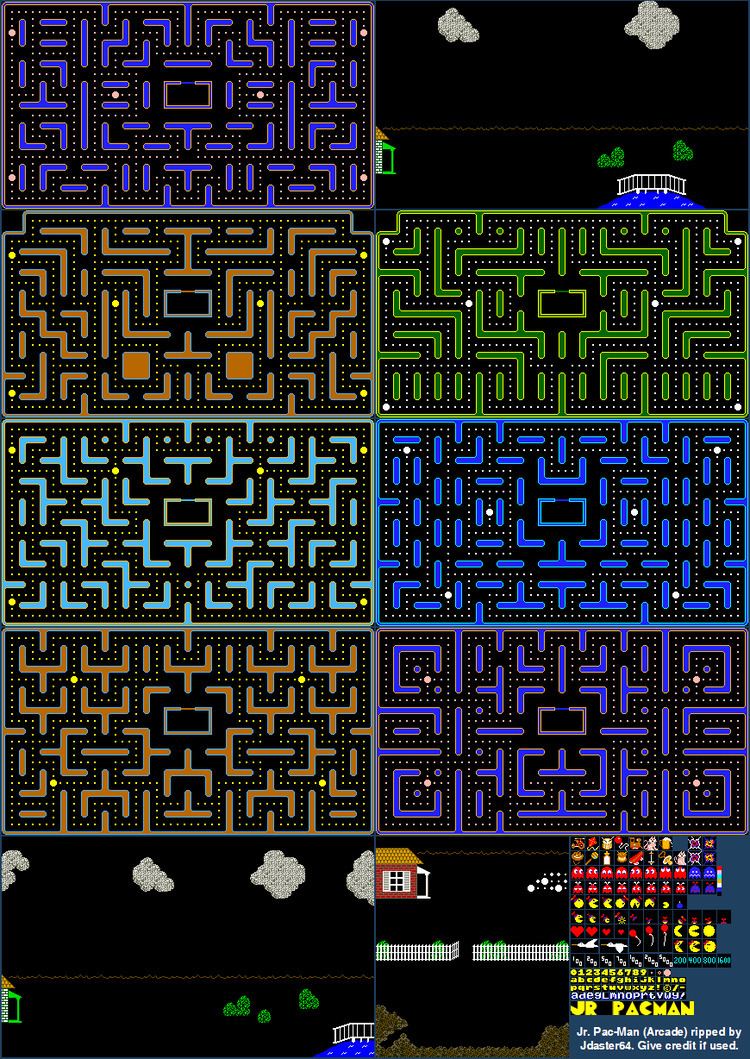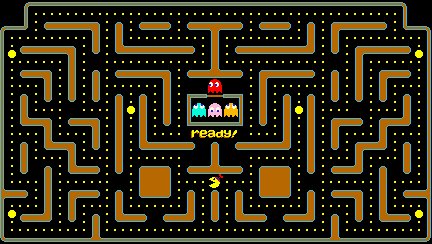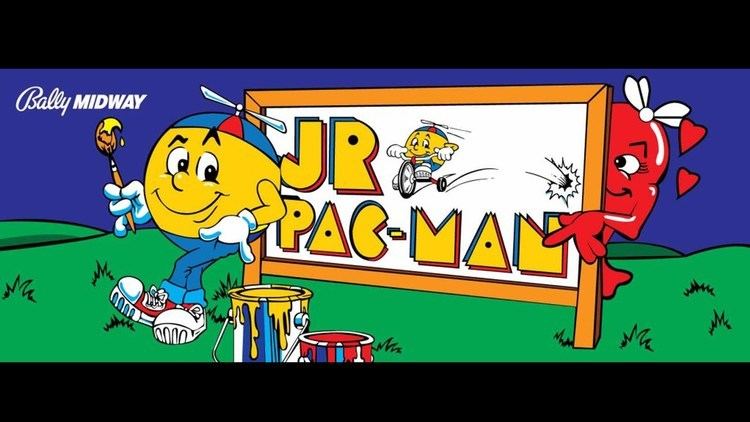9.2 /10 1 Votes
Series Pac-Man | 4.6/5 Emuparadise Cabinet Upright Initial release date 1 January 1983 | |||||||||||||||||||||||||||||||||
 | ||||||||||||||||||||||||||||||||||
Mode(s) Up to 2 players, alternating turns CPU 1x ZiLOG Z80 @ 3.072 MHz Sound 1x Namco WSG (3-channel mono) @ 3.072 MHz Publishers Atari, Namco, Midway Games, Bally Midway Manufacturing Co., Inc., Thunder Mountain Similar Pac-Man games, Namco games, Other games | ||||||||||||||||||||||||||||||||||
Arcade game jr pac man 1983 midway
Jr. Pac-Man is an arcade game, released by Bally Midway on January 1, 1983. It is based on Pac-Man and its derivatives but, like Ms. Pac-Man, Baby Pac-Man, and Pac-Man Plus, was created without the authorization of Namco. This was one of several games that would eventually lead to the termination of the licensing agreement between Namco and Bally Midway in 1984.
Contents

Gameplay

The gameplay of Jr. Pac-Man is very similar to that of its predecessors: The player controls the eponymous Jr. Pac-Man (who wears an animated propeller beanie), and scores points by eating all of the Pac-Dots in the maze, while four ghosts chase him around the maze and attempt to kill him. The player can eat an energizer to turn the ghosts blue, making them vulnerable for a short period of time, and allowing the player to eat them for extra points. Once the maze is cleared, a new maze is presented and the gameplay continues.

This game contains some of the most significant differences to the Pac-Man formula, both in terms of cosmetics and gameplay. The mazes are now two times the width of the monitor, and a virtual camera scrolls left and right through the mazes to keep up with Jr. Pac-Man, which will sometimes allow the ghosts to be off-screen. A total of seven mazes appear throughout the game, and five of them have six energizers instead of four - but none of them have tunnels that wrap around from one side of the screen to the other. As in the previous games, bonus items (such as tricycles, kites, and balloons) appear in each round, starting above the ghost regenerator and bouncing around the maze like in Ms. Pac-Man. As an item encounters dots, it changes them into larger dots that are worth 50 points instead of 10, but will also slow Jr. Pac-Man down (more than normal) as he is eating them. If an item has been out for long enough and then encounters an energizer, it will self-destruct, taking the energizer with it. If Jr. Pac-Man should die, all larger dots will disappear from the maze, except if there are only a few left—those revert to their original smaller size.

The game also contains several purely cosmetic changes from Pac-Man: It features a lower-case anti-aliased font for scores and game text, and Clyde has been renamed Tim. The game's intermissions center around the developing relationship between Jr. Pac-Man and a small red (female) ghost named Yum-Yum (who is apparently the daughter of Blinky).
Like many other games from its generation, Jr. Pac-Man has a kill screen: Reaching the 146th round causes the game to display an invisible maze that does not contain any dots, making the screen black, which will effectively end the game. On both sides of the screen, a few tiles will appear briefly. All the characters seem to move freely.
Home ports
Because of the somewhat limited popularity of the game, initially the only released port was for the Atari 2600 console; this version features different mazes that scroll vertically rather than horizontally, but is otherwise a faithful adaptation. Ports for the Atari 5200 and the Atari 8-bit computers were finished in 1984, but were scrapped along with Super Pac-Man when the home computing and game console divisions of Atari, Inc. were sold to Jack Tramiel. The game was later ported to some home computers such as the Commodore 64 and the PC.
The discovery of an unreleased prototype for the Atari 7800 was the subject of an April Fools' Day joke on the AtariAge forums in 2009. The joke was revealed as a cover for a homebrew version of the game, which was released in ROM cartridge format.
